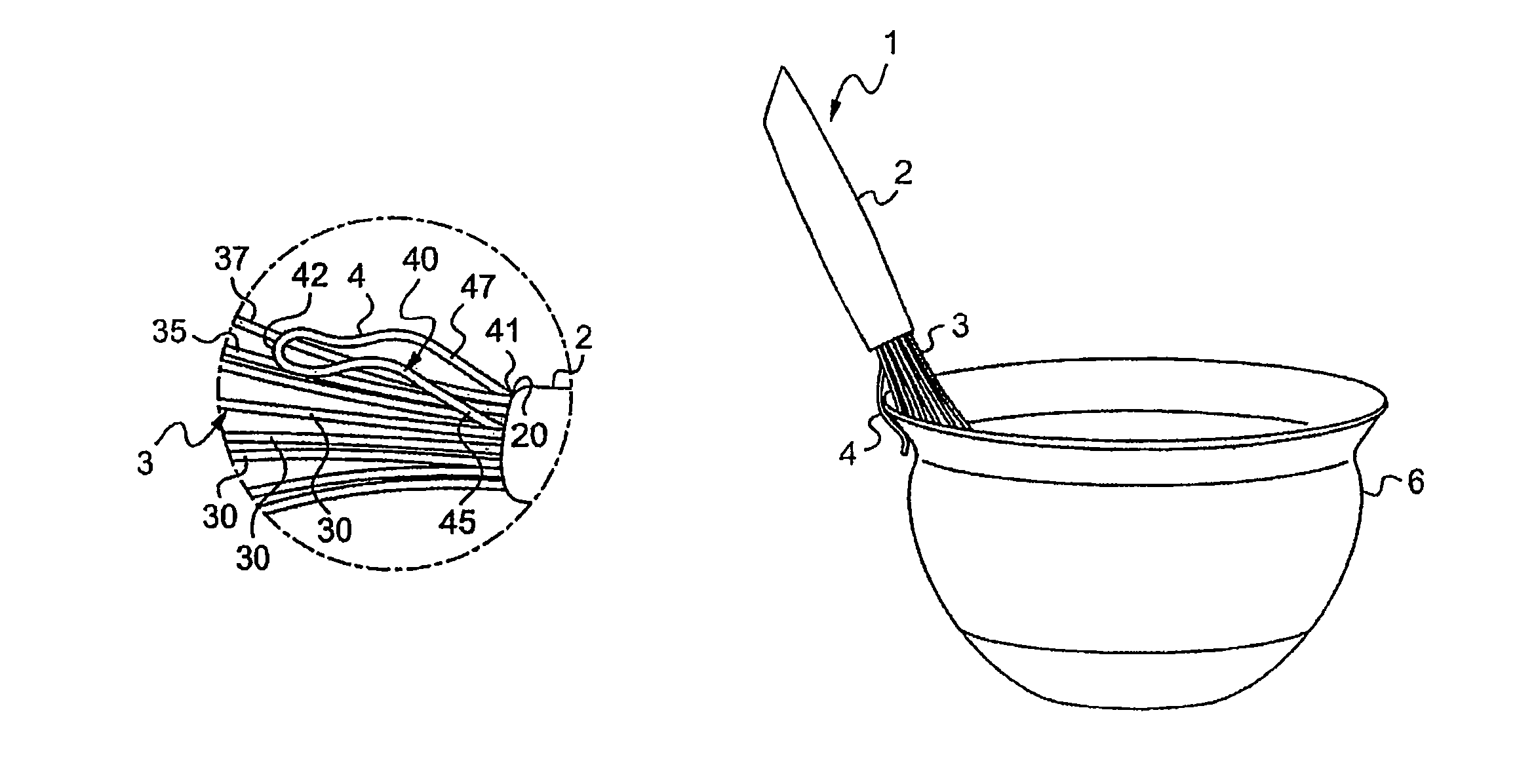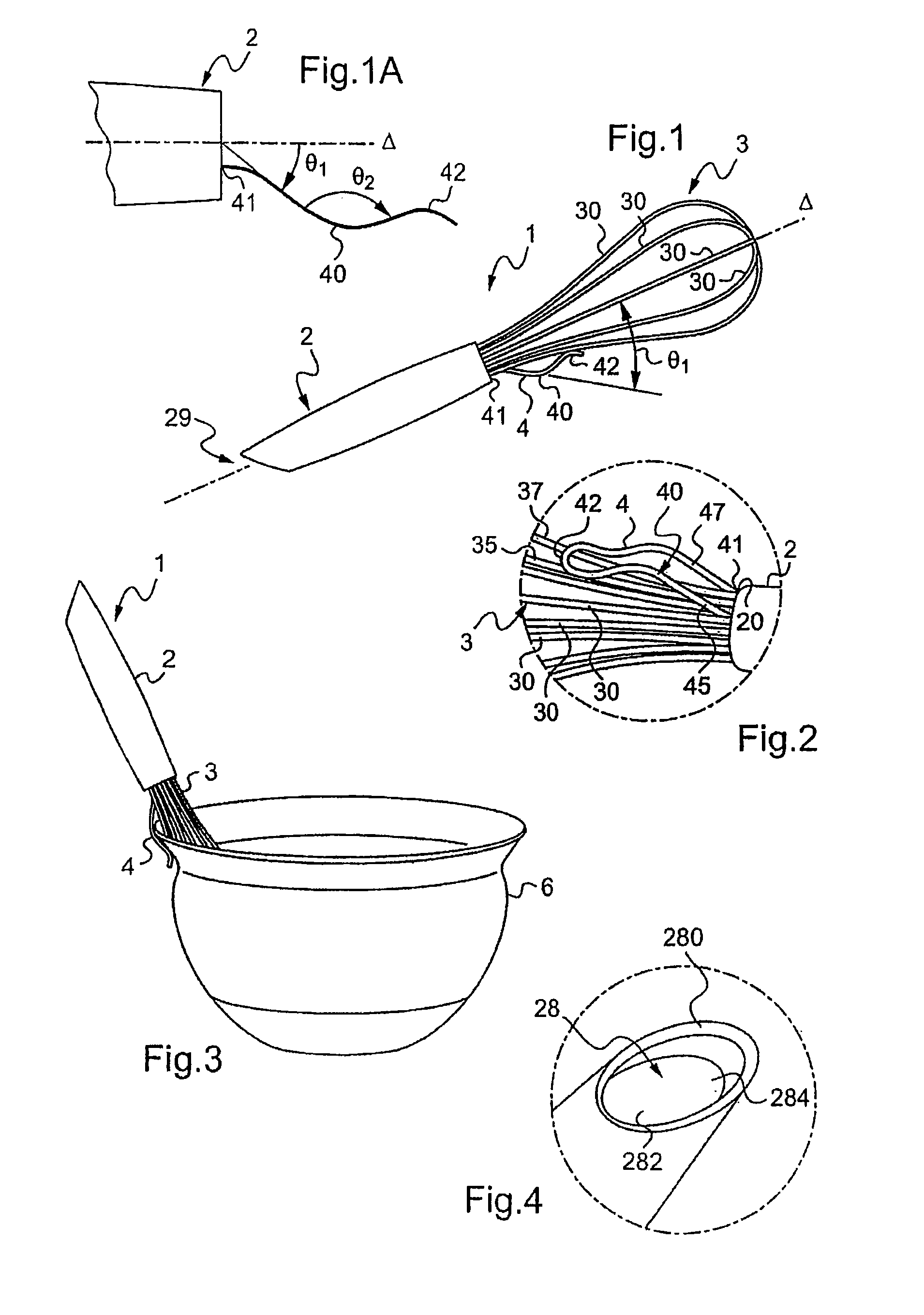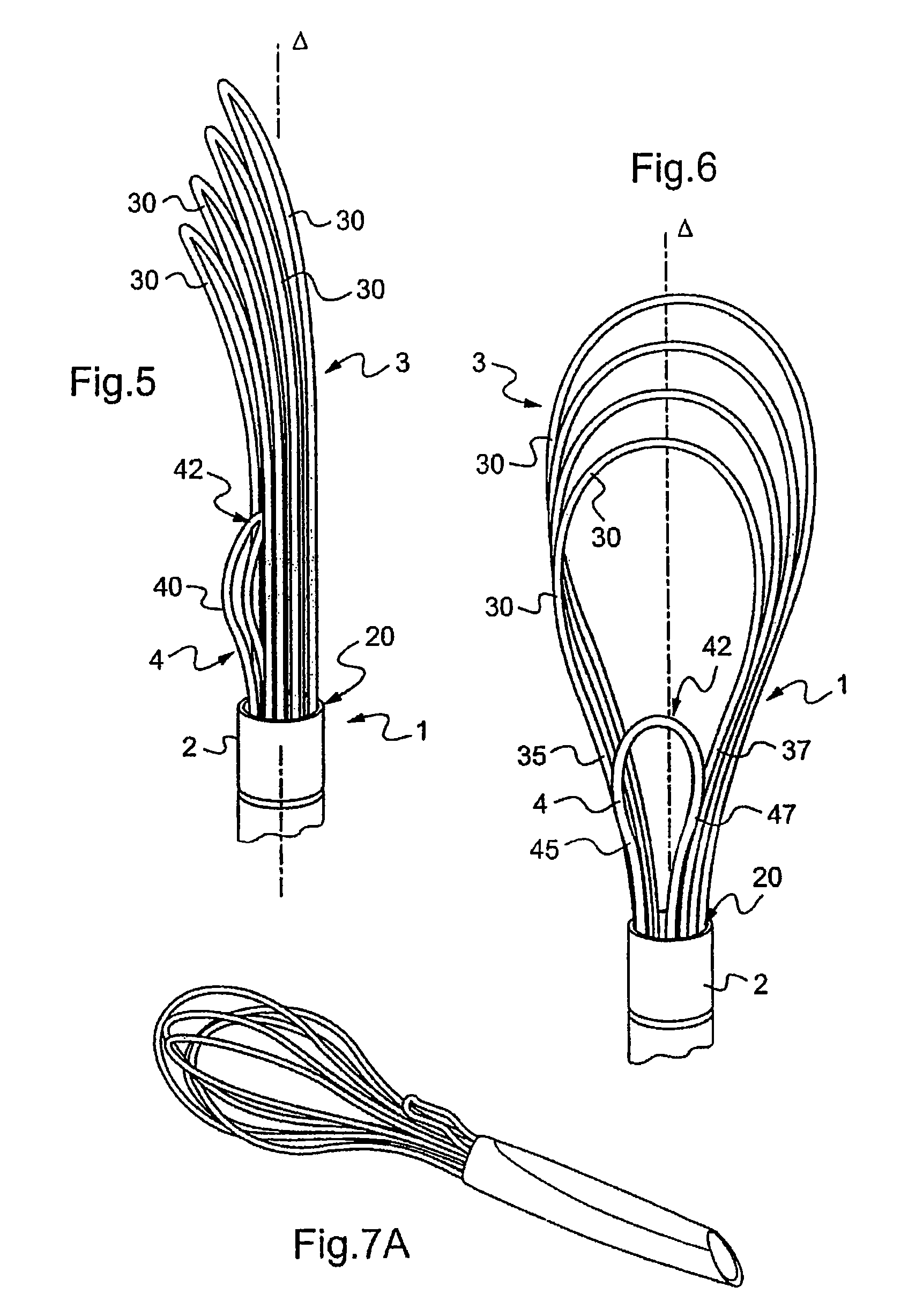Whisk, in particular for culinary use
a technology for whisks and whisks, which is applied in the field of whisks, can solve the problems of unusable whisks, poor suited for whisk use, and whisk handle contact, and achieve the effect of convenient hanging and convenient us
- Summary
- Abstract
- Description
- Claims
- Application Information
AI Technical Summary
Benefits of technology
Problems solved by technology
Method used
Image
Examples
Embodiment Construction
[0037]FIG. 1 schematically illustrates a kitchen utensil 1 in accordance with the present invention. Kitchen utensil 1, in its general sense, includes a handle and an active part. In the exemplary illustration, kitchen utensil 1 is a whisk and, accordingly, the active part is the bundle of shafts mounted on the utensil's handle. As shown in FIG. 1, the whisk generally has a pear-shaped design, and is particularly adapted for optimizing the mixing of ingredients.
[0038]As shown in FIG. 1, whisk includes a handle 2 that extends along an axis Δ. The active part includes a bundle of semi-rigid shafts that are generally pear-shaped in design. During use, the user grasps handle 2 and utilizes the whisk in the ordinary manner. Preferably, the bundle 3 of shafts is adapted to mix a variety of products and ingredients, including liquids, such as sauces, liquid-solid combinations, and solids, such as soft dough.
[0039]As shown in FIG. 1, the bundle 3 has a set of shafts 30, with each shaft 30 h...
PUM
 Login to View More
Login to View More Abstract
Description
Claims
Application Information
 Login to View More
Login to View More - R&D
- Intellectual Property
- Life Sciences
- Materials
- Tech Scout
- Unparalleled Data Quality
- Higher Quality Content
- 60% Fewer Hallucinations
Browse by: Latest US Patents, China's latest patents, Technical Efficacy Thesaurus, Application Domain, Technology Topic, Popular Technical Reports.
© 2025 PatSnap. All rights reserved.Legal|Privacy policy|Modern Slavery Act Transparency Statement|Sitemap|About US| Contact US: help@patsnap.com



